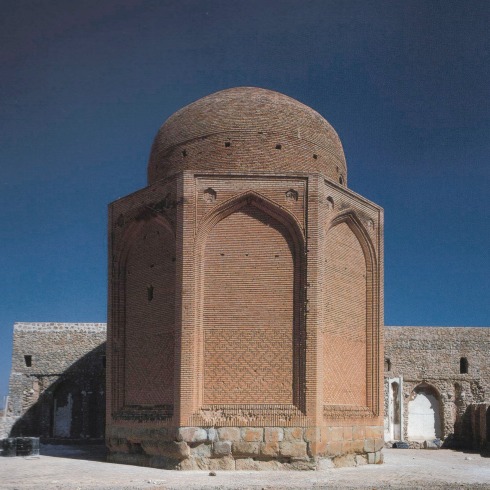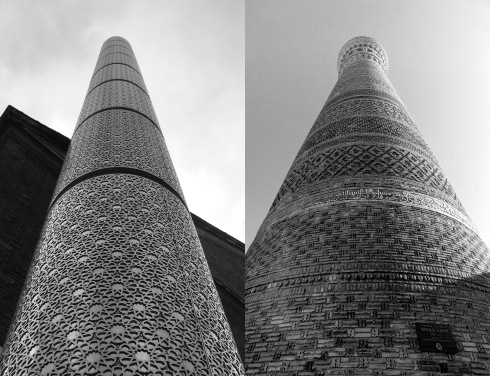You are currently browsing the tag archive for the ‘Brick’ tag.
Constructed iaround 1353, Sultaniya, Iran; the Tomb of Chelebi Oghlu is a superb precedent for what can be achieved decoratively with brick. Using standardized dimensioned bricks a repetitive islamic geometric pattern has been created without what some would consider the excessive nature of Brick Expressionism. The subtle use of different colored bricks is similar in language to Alvar Aalto’s Baker House, where twisted and distorted overburnt bricks were used at intervals of a seemingly plain elevation.
Despite the regular use of domes, the Minaret is the only architectural feature that is synonymous with mosques. Above are two examples of highly decorated minarets, separated by just short of 900 years. The much discussed Brick Lane minaret, constructed at the end of 2009 is a stainless steel structure, rising up to 90ft in amongst a highly dense part of London. The minaret is the first religious structure added to a building that has been used to house worshipers of different religions over around four centuries and has been accused of pointlessly labeling a structure that does not require it. It is however a beautifully worked piece of metal sculpture. The Islamic pattern is clinically cut using some sort of Computer Aided Manufacturing (CAM), most likely a water jet cutter; as suggested for cutting the Wallpaper Balustrade. The other, the Kalyan Minaret located in Bukhara, Uzbekistan. Constructed in 1127, this looks like a possible precedent for the whole Brick Expressionism movement, with the brick used as decoration and well as structure.
The term Brick Expressionism is used to describe a technique used most predominantly in Germany during the 1920s, using brick as a decorative material as well as a structural one. Developed during the same time period as Bauhaus, where all ornamentation was removed, expressionist architecture showed what could be achieved using a very plain construction material. Above shows the Reemtsma Cigarette Factory by Fritz Höger where the rotation of rectangular bricks creates a beautiful spiral column. More examples can be found here, including the Fernmeldeamt which is a great example of industrial styled architecture with intricate facade details.



